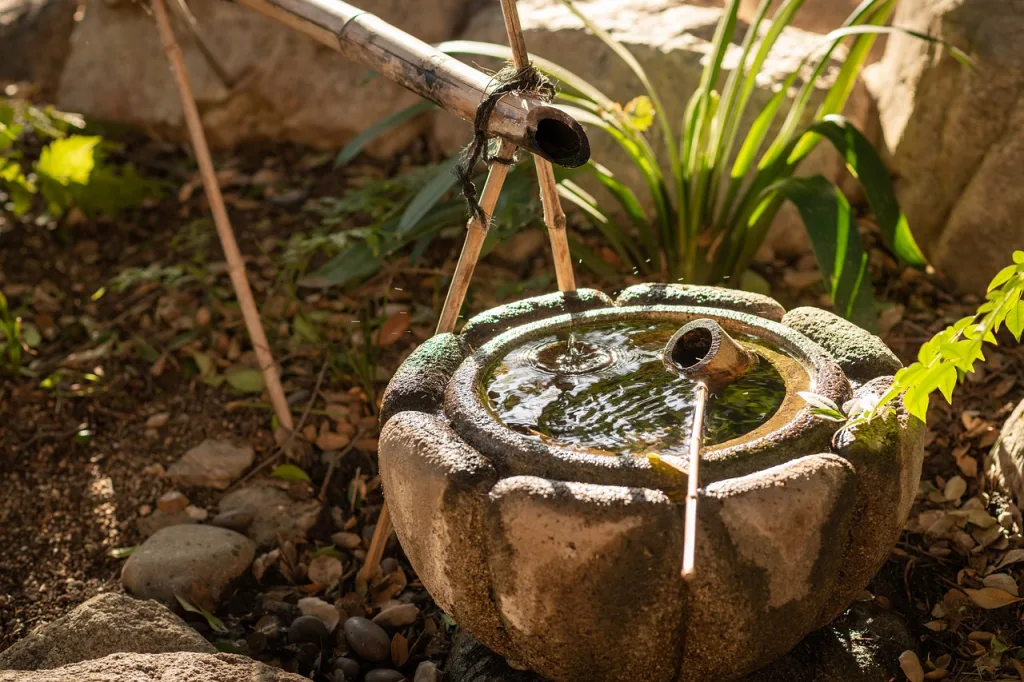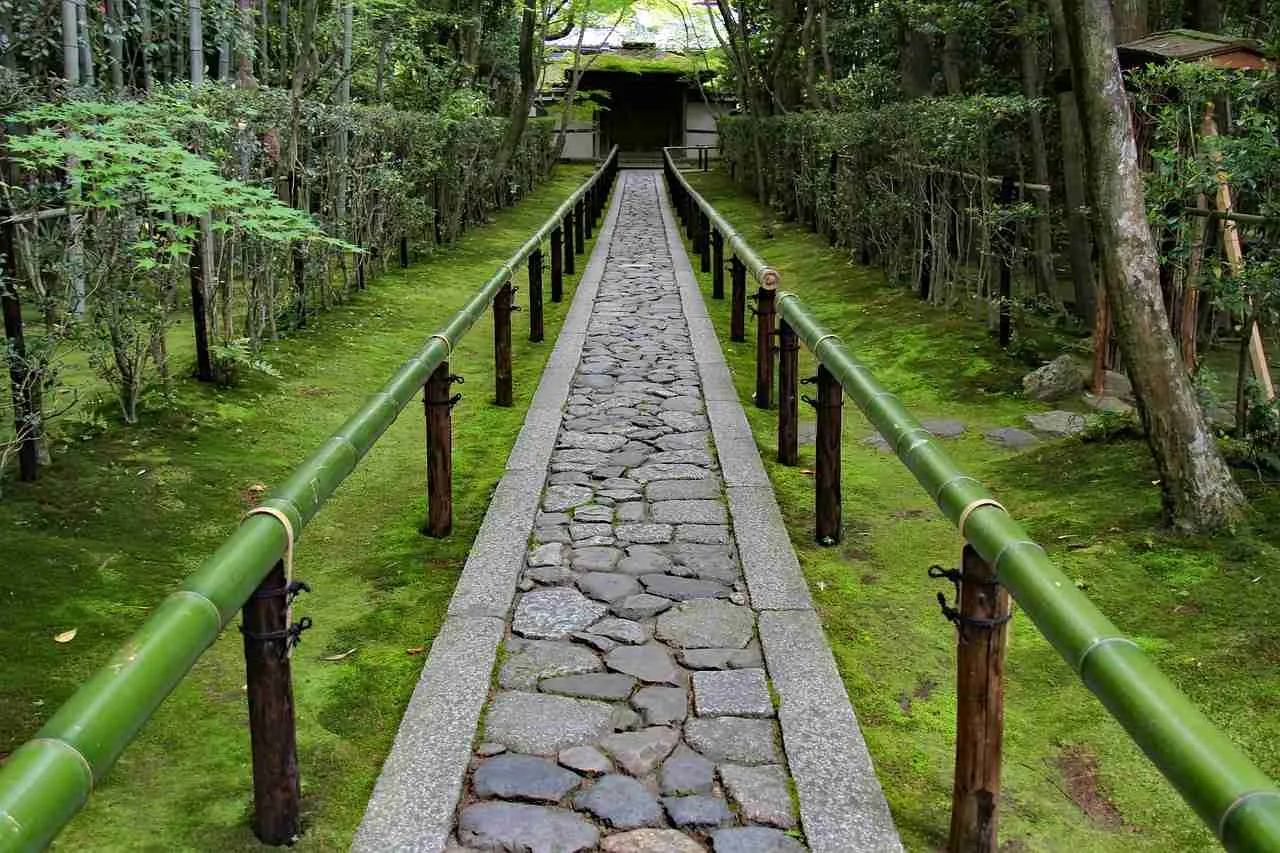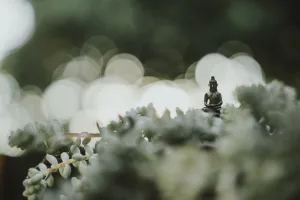Imagine walking through a tranquil Japanese garden, the sound of gentle wind chimes and the fragrance of cherry blossoms filling the air. As you wander along the carefully manicured paths, you notice a mesmerizing pattern of raked sand in one corner. Curiosity piques as you wonder – what is the significance of this intricate design? In this article, we will explore the ancient tradition of raking sand in Japanese gardens and uncover the deeper meaning behind this captivating practice. Prepare to be enchanted by the secrets hidden within the delicate lines of raked sand.

Overview of Japanese Gardens
Japanese gardens are renowned for their serene beauty and meticulous design. They are a traditional art form that has been perfected over centuries, reflecting the rich cultural heritage of Japan. These gardens are meticulously designed to create a harmonious and peaceful environment, allowing visitors to experience a sense of tranquility and connection with nature.
Brief history of Japanese gardens
The history of Japanese gardens can be traced back to the Asuka period in the 6th century, where the influence of Chinese gardens began to shape the design principles. Over time, these gardens evolved and adapted to Japanese aesthetics, incorporating elements from Zen Buddhism and Shintoism. During the Heian period, the concept of “borrowed scenery” emerged, which involves incorporating the natural landscape surrounding the garden into its design.
Main components of Japanese gardens
Japanese gardens consist of various elements carefully arranged to create a harmonious whole. These elements include water features such as ponds or streams, stone lanterns, bridges, plants and trees, and, of course, sand. Each component plays a significant role in the overall design, contributing to the peaceful and contemplative atmosphere that Japanese gardens are known for.
Different styles of Japanese gardens
There are several styles of Japanese gardens, each with its own characteristics and influences. Some of the most prominent styles include:
-
Karesansui: Also known as dry gardens or rock gardens, karesansui gardens focus on the use of rocks and sand to represent natural landscapes. These gardens often feature meticulously raked patterns in the sand, creating a sense of tranquility and simplicity.
-
Chisen-shuyu: Chisen-shuyu gardens are characterized by a central pond or stream, with carefully placed stones and plants. Paths and bridges lead visitors through the garden, providing different perspectives and viewpoints.
-
Tea Gardens: Tea gardens are specifically designed for tea ceremonies, creating a peaceful and serene environment for this traditional ritual. These gardens often feature raked sand patterns that are significant to the tea ceremony.
Understanding the Sand in Japanese Gardens
Symbolism of sand in Japanese gardens
The sand in Japanese gardens carries deep symbolic meaning. It represents water, which is essential for spiritual and physical purity. The raked patterns in the sand mimic the natural patterns of water, symbolizing the ebb and flow of life and imparting a sense of calmness and harmony.
Types of sand used
Several types of sand are used in Japanese gardens, each with its own unique characteristics. Some common types include white sand, which symbolizes purity and simplicity, and dark sand, which creates a more dramatic contrast and is often used to represent mountains or bodies of water.
Arrangements of sand in gardens
Sand is arranged in various ways in Japanese gardens, depending on the style and desired effect. In karesansui gardens, the sand is often raked into intricate patterns, resembling rippling water or waves. The placement of rocks, stones, and plants further enhances the overall composition and adds depth to the design.
The Art of Raking Sand
Rituals associated with raking sand
Raking sand in Japanese gardens is not merely a physical activity but also a spiritual practice. It is often accompanied by rituals and ceremonies that help create a meditative atmosphere. Before raking, practitioners may perform a cleansing ritual, purifying their mind and body to fully engage in the meditative process.
Different raking techniques
There are several raking techniques used to create different patterns in the sand. Some commonly used techniques include the “line and circle” method, where straight and curved lines are combined to represent flowing water, and the “parallel lines” method, which creates a sense of depth and perspective by raking parallel lines at different intervals.
Frequency and timing of raking
The frequency and timing of raking sand depend on various factors, including the style of the garden, the season, and personal preferences. In some gardens, sand is raked daily as part of a caretaker’s routine. In contrast, others may only rake the sand on special occasions or when hosting events. The timing of raking can also be influenced by the desired effect, with some patterns requiring more frequent raking to maintain their clarity.
Tool for Raking Sand
Traditional tools used for raking
Traditionally, Japanese gardens used specific tools for raking sand. One such tool is the “shinigyo” or bamboo rake, which has thin and flexible teeth that allow for intricate patterns to be made in the sand. Another common tool is the “shumoku” or wooden stick, which is used to create straight lines and precise markings.
Modern tools used today
While traditional tools are still widely used in Japanese gardens, modern variations have also emerged. Metal rakes with adjustable teeth are favored for their durability and ease of use. Some modern rakes even come with extensions and adjustable handles, allowing for greater control and reach.
Care and maintenance of raking tools
Proper care and maintenance of raking tools are essential to ensure their longevity and effectiveness. After each use, it is important to clean the tools and remove any debris or sand that may have accumulated. Additionally, storing the tools in a dry and safe place helps prevent rusting or damage.

Symbolism of Raked Sand Pattern
Understanding different patterns
There is a wide variety of raked sand patterns in Japanese gardens, each with its own significance and meaning. Some patterns may mimic the flow of water, while others recreate natural landscapes such as mountains or rivers. Understanding the different patterns is key to appreciating the symbolism behind them.
Meaning behind each pattern
Each raked sand pattern carries its own symbolism and meaning. For example, concentric circles may represent the ripples caused by droplets of water, signifying the ever-expanding impact of our actions. Parallel lines can symbolize the flow of a river or the passing of time. The beauty of these patterns lies in their ability to evoke different emotions and contemplations.
Significance of changes in patterns over time
The changes in raked sand patterns over time are not accidental but intentional. Caretakers of Japanese gardens purposefully alter the patterns to reflect the changing seasons or special occasions. The shifting patterns symbolize the impermanence of life and the ever-changing nature of the world around us.
Spiritual Significance of Raking Sand
Raking sand as a form of meditation
Raking sand in Japanese gardens is often regarded as a form of meditation. It requires focus, precision, and a deep sense of mindfulness. The rhythmic motion of the rake, combined with the repetitive nature of the task, helps clear the mind and cultivate a sense of inner peace.
Raking sand for self-realization
Engaging in the practice of raking sand allows individuals to connect with their inner selves and gain insights into their thoughts and emotions. It offers a space for self-reflection and introspection, enabling individuals to gain clarity and a deeper understanding of themselves.
How raking sand fosters mindfulness
Mindfulness is a central concept in Japanese gardens and the act of raking sand contributes to its cultivation. By focusing on the present moment and each stroke of the rake, individuals become fully immersed in the task at hand. This presence of mind brings about a state of mindfulness, enhancing one’s awareness and appreciation of the beauty in even the simplest actions.

Therapeutic Impact of Sand Raking
Physical benefits of raking sand
Aside from its spiritual significance, raking sand also offers several physical benefits. The act of raking engages the body in gentle exercise, promoting flexibility and coordination. It can also serve as a stress-relieving activity, helping to release tension and promote relaxation.
Emotional and psychological benefits
Raking sand has been found to have a positive impact on emotional and psychological well-being. The rhythmic motion and repetitive nature of the task can be soothing and calming, reducing anxiety and promoting a sense of inner harmony. It can also serve as an outlet for emotional expression and a way to find solace amidst the pressures of daily life.
Potential as a therapeutic hobby
Given its numerous benefits, raking sand can be pursued as a therapeutic hobby. Whether practiced in private gardens or at dedicated meditation centers, individuals can engage in this activity as a means of self-care and personal growth. It provides an avenue for relaxation, creative expression, and a deeper connection with oneself and the natural world.
Raking Sand in Tea Gardens
Role of sand raking in tea ceremonies
Tea gardens hold a special place in Japanese culture, symbolizing tranquility and harmony. The raked sand in these gardens plays a crucial role in the tea ceremony, creating a serene atmosphere for the ritual. The act of raking sand before the tea ceremony begins prepares the space and the participants for the ensuing experience.
Specific patterns used in tea gardens
In tea gardens, specific raked sand patterns are used to enhance the ambiance and create an aesthetically pleasing environment. One common pattern is the “cross and circles,” where intersecting lines and circles are formed, representing the unison of opposing forces and the interconnectedness of all things. These patterns reinforce the tea ceremony’s underlying principles of humility, simplicity, and respect for nature.
Relationship between raking and tea ceremony preparation
Raking sand in tea gardens is not separate from the preparation of the tea ceremony itself. It is part of a holistic approach to creating an atmosphere that fosters mindfulness and reflection. The act of raking serves as a ceremonial ritual, marking the transition from the ordinary to the sacred space of the tea ceremony, where participants can fully immerse themselves in the present moment.
Influence on Contemporary Landscaping
Incorporation of raked sand in modern gardens
While raked sand patterns originated in traditional Japanese gardens, their influence has extended to contemporary landscaping. Many modern gardens now incorporate the art of sand raking as a way to evoke a sense of calmness and tranquility. Raked sand can be found in various public spaces, such as parks, museums, and even corporate settings, providing a subtle reminder of the beauty and tranquility found in Japanese gardens.
Non-traditional uses of sand raking art
Beyond traditional gardening, the art of sand raking has found non-traditional applications in various art forms and installations. Contemporary artists have embraced this ancient practice, incorporating raked sand patterns into their sculptures and installations, creating thought-provoking visual experiences that resonate with viewers on a deeper level.
Raked sand designs in small, urban spaces
Even in small, urban spaces where traditional Japanese gardens are not feasible, the principles of raked sand can still be applied creatively. Miniature Zen gardens, often consisting of a small tray filled with sand and carefully arranged rocks and miniature plants, offer a way to experience the beauty and tranquility of the traditional Japanese garden in a compact form. These portable gardens can be placed on desks, tabletops, or any small space, providing a moment of respite and mindfulness amidst busy urban lifestyles.
Learning the Art of Raking Sand
Courses and workshops on raking sand
For those interested in mastering the art of raking sand, there are courses and workshops available that teach the techniques and principles behind this ancient practice. These classes provide hands-on instruction, allowing participants to experience the meditative qualities of raking sand while learning from experienced practitioners.
Skills required to rake sand
Raking sand may appear simple, but it requires a certain level of skill and precision to create harmonious patterns. Patience, attention to detail, and an appreciation for aesthetics are essential qualities for anyone wishing to become proficient in sand raking. With practice and guidance, individuals can develop their skills and deepen their understanding of this art form.
Becoming proficient in sand raking
Becoming proficient in sand raking is a journey that requires dedication and a deep appreciation for the principles and symbolism behind the practice. By immersing oneself in the art of raking, attending workshops, and seeking guidance from experienced practitioners, individuals can gradually develop the skills and knowledge necessary to create their own meaningful and harmonious patterns in the sand.
In conclusion, the significance of raking sand in Japanese gardens extends far beyond its visual appeal. It is a spiritual practice, a form of meditation, and a means of self-realization. The careful arrangement of sand patterns and the act of raking itself are a reflection of the impermanence of life and the ever-changing nature of the world. Raking sand offers physical, emotional, and psychological benefits, providing a sanctuary of harmony and tranquility. Whether practiced in traditional gardens or incorporated into contemporary landscaping, the art of raking sand continues to inspire and captivate individuals around the world, fostering a deeper connection with nature and the self.




